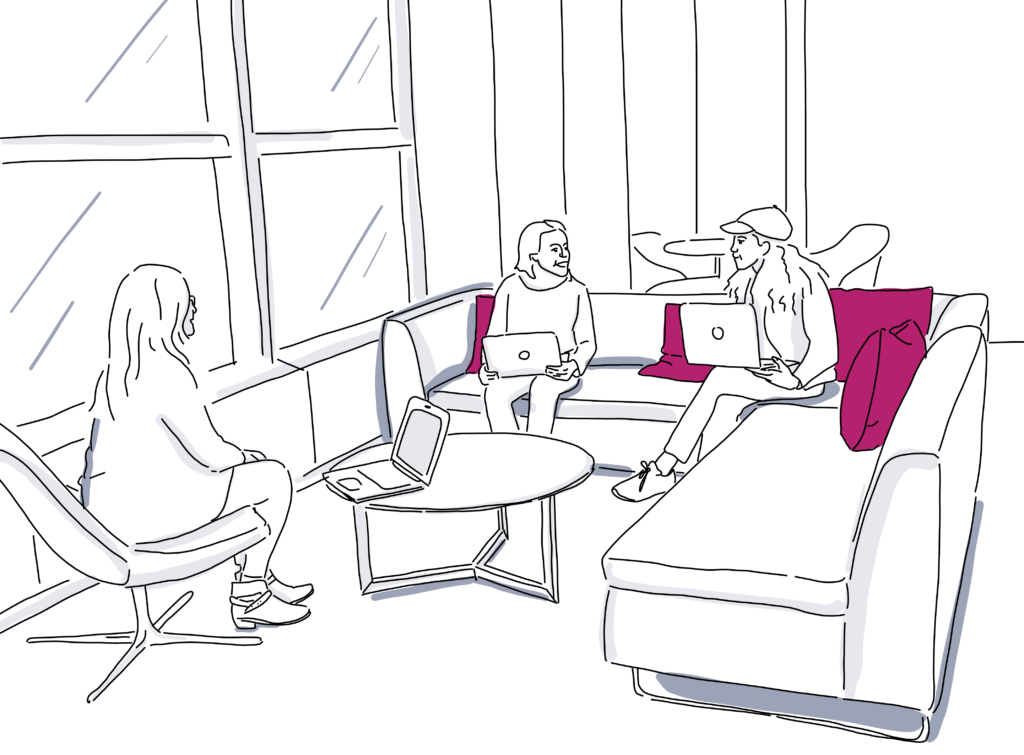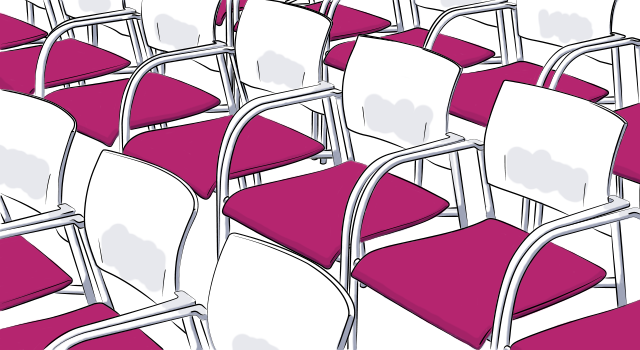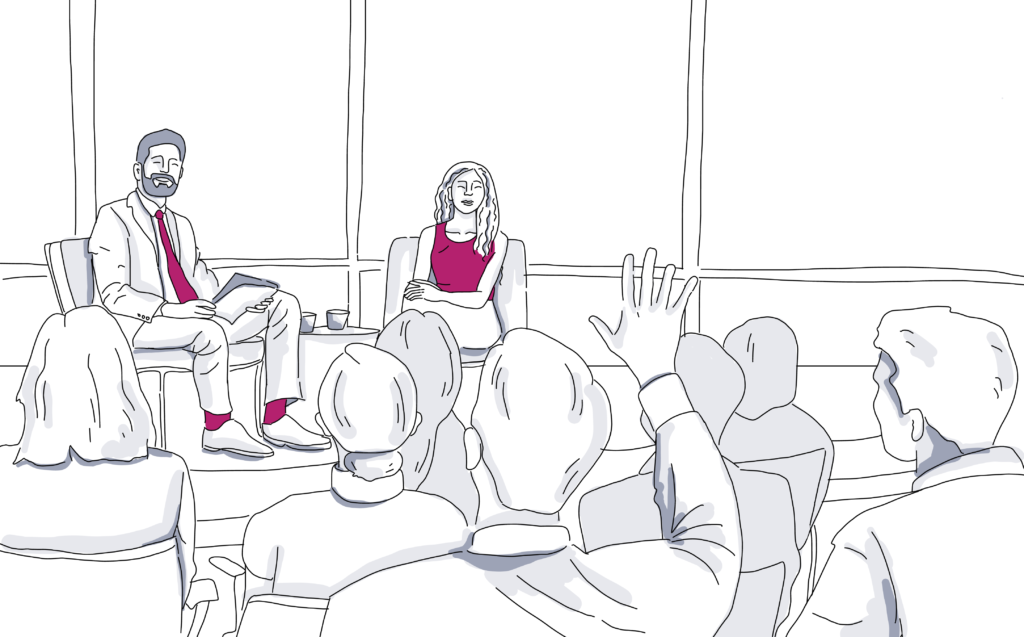
3 Ways to Mix Up Speed Networking at Your Next Conference
While I am not a big fan of hosted speed networking events on their own, I am a strong believer in integrating speed networking concepts with corporate conference activities.
No matter how many hands are shaken at conferences, there will always be a little uneasy about approaching strangers.
By offering speed networking as part of your conference program, you eliminate this barrier. You also allow your attendees to meet more people in a short period of time and with less effort than they individually could during coffee breaks.
If done right, speed networking will provide one more added value: by helping to match the right individuals, which immediately raises the value of attending your conference.
There are different formats for networking at conferences. To figure out the best format for your event, it’s best to understand it through the lens of your attendees.
Which connections are most relevant to your attendees? Is the thought of interacting with fellow attendees getting the masses to register for your event? Or do the expert speakers, and panelists attract the crowd?
Let’s dive into 3 ways to mix up speed networking at a conference:

1. Attendees speed network with experts and speakers in a group, workshop style, with a focus on pre-selected topics.
So what’s the benefit for attendees here?
The direct benefit is that attendees get the opportunity to network with experts and interact with fellow attendees at the same time. Sharing experiences in a group setting provides an excellent opportunity for knowledge exchange on one specific topic.
To try this at your next event, have attendees select 3 topics of interest during the registration process and designate 3 topical experts. Have your event staff members assign time-slots and tables for each attendee. Then, communicate to attendees the speed networking rules. Seat each of your topical experts on a table, surrounded by up to 10 attendees. After a brief introduction by the expert, each attendee has 1 minute to introduce themselves and to spell out specifics they would like discussed.
[Tweet “How do you approach offering speed networking opportunities at your conference?”]
The expert replies briefly, in 1-2 minutes. Follow-up opportunities should be mentioned. Then, the fellow attendees have 1 minute to chip in. Allow a maximum of 3 minutes for each attendee’s introduction and topic. For a total of 10 attendees, a 30-minute round would be the maximum.
Then it’s on to the next table! Interaction with a fairly large number of people is possible in one setting, so I recommend this format for larger conferences.
This style of speed networking is best-conducted mid-way through, or towards the end, of the day. This allows attendees to go into depth about issues they have already heard about during the day’s sessions.
And it’s a good way to engage attendees through the end. Best of all, discussions can be continued during the evening’s networking reception!
2. Attendees speed network individually, based on the speaker’s focus.
If your attendees want to get one-on-one attention from experts, speed networking on an individual basis might be the best approach. While this set-up may decrease attendees’ chances of meeting one another, it affords attendees the opportunity to discuss matters in private and encourages the formation of individual relationships.
It also allows attendees to meet with a larger number of experts than the group setting would offer.
To execute this form of speed networking, provide your attendees with background information on the expertise of each speaker. Encourage your attendees to pre-select up to 6 experts they would be interested in networking with.
Have a computer assign time-slots, and tables for each attendee, and communicate the details! Give each expert their own ˜station’ and have the attendees rotate.
If you’re deciding on a room set, classroom style with rows of chairs facing each other works great. Allow for enough space to either side of the chairs, so a conversation can be held despite the loud noise level expected. If space is scarce, set up two chairs on each side of a coffee table.
Allow for enough space to either side of the chairs, so a conversation can be held despite the loud noise level expected. Implement your rules, and assure, attendees move swiftly to the next table. This format is ideal for smaller conferences and those events with little time for the speed networking slot.
[Tweet “Pro tip: Speaker-focused networking works best when held toward the end of the conference.”]
Attendees feel more comfortable to discuss projects with expert speakers. And it’s an excellent tool for keeping attendees interested in the latter parts of your conference!

3. Speed networking among conference attendees.
This style of speed networking is the most common. This method gives attendees the chance to initiate one-on-one business relationships, or potential co-operation, with individuals and not to mention, it’s an excellent way to generate business leads.
Planners who opt for this style of networking can publish a registration list with name/organization/field of interest for all attendees for a sneak preview.
Individuals can register for one of the time slots offered and won’t know who they’ll get to interact with during the rotation. Your team, or a computer, can assign the time slots. Remember to communicate the time and location of this session to your attendees!
With conferences of more than ~ 120 attendees, be sure to have multiple parallel speed networking sessions in separate rooms. Each room can focus on a topic, and networking can be done round robin style: one group of attendees moving clockwise, while the other group of attendees is stagnant.
Then switch, so each of the two camps gets a chance to interact with each other, as well. This setting is ideal for smaller crowds unless a topic of discussion is introduced.
This set-up is ideal for the beginning of your conference. It allows everyone to get to know each other and leaves enough time to follow-up during breaks.
Next steps to make a conference more engaging:
Speed networking can be a chaotic experience if not orchestrated well. Communicate the rules to the attendees and ˜table hosts’ ahead of time and remind them again on-site.
Have plenty of staff available to support ˜rotations’ “ there is always a need for support! If time runs out as the sessions progress, be sure the moderator enforces the schedule with a buzzer.
Insist on a set-up that invites further discussions: over a coffee, during break-out sessions, or during an evening reception. Your speed networking attendees will thank you!

Now You’re Prepared to Create Better Conference Speed Networking!
As a next step, don’t forget to get your copy of our printable event planning checklist. From networking to setup and every detail in between, it will help you create a memorable and profitable event! Or get ideas for event icebreakers.
Looking for more information about speed networking?
You should keep your goals in mind from the beginning – know the message/value proposition that you want to convey to the people you meet, and get the point across as soon as possible. Bring a one-page document that describes what you can offer.
At a networking event, you meet professionals for the purpose of obtaining new contacts and relationships that you can use to further your career or business goals. You talk to people about their jobs and businesses, for the purpose of building mutually beneficial relationships.
Ask questions that are related to your goals for a particular event. Are you looking to find new employment opportunities or are you looking for potential customers? Some ideas include asking about job responsibilities, prior experience, or problems in the workplace.
It’s an accelerated and efficient way to acquire new business contacts. It is important because of its efficiency in forging connections.

